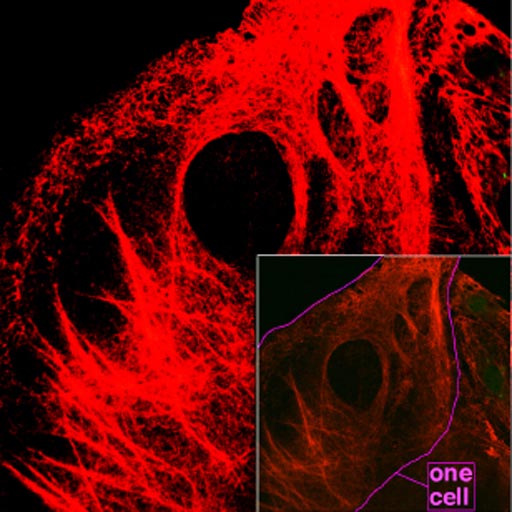Enzyme Responsible for Skin Thickening Disorder Linked to Esophageal Cancer
By LabMedica International staff writers
Posted on 17 Feb 2017
A recent paper explained the molecular mechanism underlying the development of palmoplantar keratoderma (thickening of the skin on the palms of the hands and soles of the feet) in the rare genetic disease Tylosis with esophageal cancer (TOC).Posted on 17 Feb 2017
This condition is inherited as an autosomal dominant syndrome and is characterized by palmoplantar keratoderma, oral precursor lesions particularly on the gums (leukoplakia), and a high lifetime risk of esophageal cancer (95% develop esophageal cancer by the age of 65).

Image: A photomicrograph of keratin filaments inside cells (Photo courtesy of Wikimedia Commons).
Investigators at Queen Mary University of London reported in the January 27, 2017, online edition of the journal Nature Communications, that the inactive rhomboid protease RHBDF2 (Rhomboid family member 2 - the alternative name iRhom2 has been proposed, in order to clarify that it is a catalytically inactive member of the rhomboid family of intramembrane serine proteases) regulates thickening of the footpad epidermis through its interaction with keratin 16 (K16). K16 is a cytoskeletal scaffolding protein highly expressed at pressure-bearing sites of the mammalian footpad, which can be induced in hyperproliferative states such as wound healing, inflammation, and cancer.
The investigators found that mice that had been genetically engineered to lack the iRHOM2 gene had abnormally thin paw skin, while humans with mutations that increased the expression of iRHOM2 had thickened palms and soles with callouses, and that a high percentage of these patients developed esophageal cancer.
At the molecular level, the investigators found that iRHOM2 bound to K16, and that this interaction was increased in TOC keratinocytes, where it was associated with robust downregulation of K16’s binding partner K6. In humans and mice, iRHOM2 loss resulted in dampened proliferation and reduced K16 expression, and in mice this led to thinning of epidermis in the footpad.
The authors concluded that, "These findings contribute to our understanding of the molecular mechanisms underlying hyperproliferation of the palmoplantar epidermis in both physiological and disease states, and how this "stress" keratin is regulated. These findings highlight a novel and fundamental role for iRHOM2 in regulating the epithelial response to mechanical stress."













